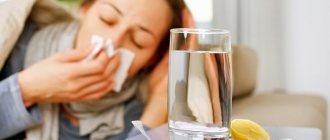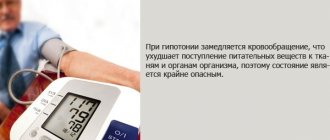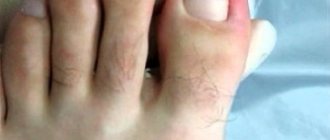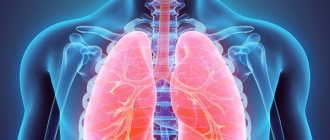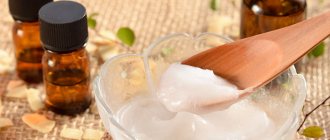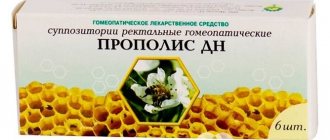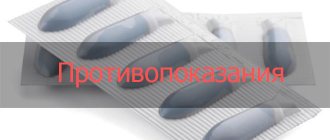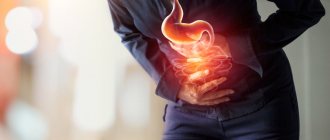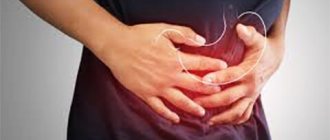Hemorrhoids are a very common disease and can be treated quite successfully in the early stages. However, up to 80 percent of people with hemorrhoids, experiencing discomfort and pain, do not want to see a doctor due to the sensitivity of this topic. However, at the first signs of hemorrhoids, contacting a specialist is simply necessary. Treatment of hemorrhoids at home without an accurate diagnosis and examination by a doctor is dangerous because:
- It is necessary to monitor the effectiveness of treatment of the disease over time by a specialist.
- When using medicinal herbs, allergic reactions may occur
- Unsystematic, uncontrolled treatment with drugs is dangerous
- Lack of medical control over the course of the disease contributes to the progression of hemorrhoids and can worsen the patient’s condition.
First aid at home
You can provide emergency care to a patient at home, relieve acute symptoms, so that the doctor can then begin to treat him. Support includes medicines and traditional recipes. First aid for hemorrhoids at home is provided by:
- non-steroidal anti-inflammatory drugs that relieve pain and inflammation - Ibuprofen tablets;
- hemostatic agents – Vikasol;
- relieving acute symptoms – Ginkgo forte;
- acting for a long time - Detralex tablets;
- soothing - homemade ice candles with herbs;
- relieving itching, severe pain, stopping bleeding - hemostatic.
How and with what to treat hemorrhoids?
Is it possible to quickly and effectively cure hemorrhoids? Unfortunately, there is no one drug that would eliminate this problem forever. Treatment of hemorrhoids is a complex of treatment methods, each of which affects its cause, pathogenesis and symptoms.
Hemorrhoids can be completely cured only with comprehensive treatment. Only a specialist, a proctologist, knows how to do this. As a rule, rarely anyone manages to cope with the disease on their own.
Thus, hemorrhoids can be completely cured only by combining the following methods:
- lifestyle correction;
- diet;
- drug therapy;
- physical therapy and gymnastics;
- minimally invasive methods of treating hemorrhoids;
- radical surgery.
Also, next to traditional methods, hemorrhoids are treated with folk remedies, unless, of course, the treating doctor allows it.
In addition, it must be said that you should not expect a quick effect in the treatment of hemorrhoids, since the symptoms can be eliminated within a few days, but in order to improve the condition of the hemorrhoidal veins, they will need to be treated for several weeks or even months. In addition, even cured hemorrhoids require constant adherence to diet, exercise and preventive courses of venotonics.
Now let's look in more detail at how hemorrhoids can be treated.
Preventive measures
To cope with hemorrhoids, tablets and ointments alone are not enough. It is important to adhere to preventive measures that will allow you to forget about this disease for a long time.
- Be sure to include cereals, vegetable oils, fresh vegetables and fruits in your diet. The list of prohibited foods includes all hot and spicy dishes, pickles, and alcohol.
- Try not to stay in one position for a long time, do physical exercises.
- Move more, do pelvic strengthening exercises and avoid strenuous physical work,
- Monitor your intestinal function; without normalizing your stool, you won’t be able to completely cure the disease.
Hemorrhoids are a very delicate problem with which women are in no hurry to consult a doctor. According to WHO statistics, more than 70% of the population have signs of varicose veins of the rectum, but try to treat themselves. Delay can lead to serious consequences and long-term treatment, so if you value your health, do not delay visiting a specialist.
What pills are prescribed for hemorrhoids?
The most effective drugs against hemorrhoids are tablets. They fight not only the consequences of the disease, but also the causes of its occurrence.
Tablets are capable of:
- eliminate pain syndrome;
- improve vascular tone;
- normalize blood circulation;
- eliminate itching and burning in the anus, etc.
Let's look at the most effective pills for hemorrhoids.
Detralex
The first drug we will consider is Detralex. It is rightfully considered the most common drug against the expansion of hemorrhoids. Its spectrum of action includes:
- increased vascular tone;
- increased blood inflow and outflow;
- reducing vascular fragility;
- elimination of discomfort and pain.
This drug acts only in the early stages of the disease. He is no longer able to improve the patient’s condition in the case where the hemorrhoids have fallen outside the anus.
Phlebodia 600
Refers to venotonics. The properties of Phlebodia 600 are the following:
- improvement of lymphatic drainage;
- increased vascular tone;
- elimination of inflammatory processes;
- strengthening the walls of blood vessels.
Venarus
The drug is an excellent alternative to Detralex, as it has similar properties. The only difference is the price. This drug is quite inexpensive, which explains its popularity.
Troxevasin
And the last drug is Troxevasin. It is able to relieve swelling in the anal area, reducing the permeability of the vascular walls.
These drugs affect blood circulation and the condition of blood vessels, so improper use can lead to serious consequences. You should not rely on quick treatment of hemorrhoids with pills. Be sure to consult a specialist.
Ointments for hemorrhoids - which help best?
At the first manifestations of hemorrhoids, it is important to start treatment promptly. If a visit to the doctor is postponed for some reason, the primary symptoms can be quite successfully dealt with at home. Time-tested medications will help eliminate discomfort and unpleasant sensations. In the pharmacy you can find completely safe ointments for hemorrhoids, which can be used without a doctor’s prescription.
We list inexpensive and effective ointments for hemorrhoids:
- Heparin ointment. Promotes the resorption of hemorrhoids, relieves inflammation, eliminates pain and discomfort, and prevents the development of thrombosis.
- Levomekol. A drug with an antibacterial effect effectively copes with pathogenic microflora that causes inflammation in the rectal area. When applied topically, the medication is not addictive and does not cause side effects. The ointment additionally exhibits a wound-healing effect and prevents the development of complications.
- Gepatrombin G ointment. The active ingredients of the drug are heparin and prednisolone. Heparin helps strengthen the venous wall, has a resolving effect and helps reduce hemorrhoids. The second component eliminates pain and discomfort and stops the inflammatory process.
- Proctosan ointment. This product does not contain steroid hormones, so it can be used even by pregnant women. The basis of the ointment is bufexamac and lidocaine, which provide an analgesic and anti-inflammatory effect and quickly cope with the unpleasant symptoms of hemorrhoids.
- Vishnevsky ointment. A natural preparation based on birch tar, xenoform and castor oil. Quickly heals cracks and abrasions, has a disinfecting and anti-inflammatory effect. It is more convenient to use the ointment in the form of compresses, applying it to the inflamed nodes and covering with plastic film. The compress is kept for 2-3 hours or left overnight.
- Relief ointment. An effective remedy based on shark liver extract. Shows a powerful anti-inflammatory and regenerating effect, heals injuries and anal fissures, and quickly eliminates the unpleasant symptoms of hemorrhoids. This drug is produced not only in the form of an ointment, but also in the form of rectal suppositories for the treatment of internal hemorrhoids.
- Troxevasin ointment. A popular remedy with venoprotective, antiseptic and analgesic effects. Promotes the resorption of hemorrhoids, strengthens venous vessels, relieves pain and swelling, and reduces the inflammatory process.
Diagnostics
Hemorrhoids outside the anus are diagnosed already during the first examination of the affected area, when swollen, hyperemic, dense hemorrhoids are visualized, sometimes with ulcers or erosions at the tops, covered with blood clots.
A rectal examination makes it possible to palpate internal lumps and sometimes polyps or neoplasms of the rectum.
Anoscopy helps to determine the full extent of internal hemorrhoids: localization. stage. severity, concomitant diseases. If necessary, sigmoidoscopy, colonoscopy, and irrigoscopy are performed.
A clinical minimum laboratory examination is required:
- UAC, OAM, biochemistry;
- coprogram;
- feces for worm eggs, occult blood and dysbacteriosis;
- Ultrasound of the abdominal organs;
- biopsy if polyps or neoplasms are detected with histological examination.
Consultation with specialized specialists is often required: gynecologist, urologist, gastroenterologist, endocrinologist.
Suppositories for hemorrhoids: inexpensive and effective
Effective means against the expansion of hemorrhoids (including blood) are suppositories. They are introduced internally, which allows the components to act more effectively on the affected areas.
Patients are recommended to use the following suppositories.
- Nigepan. Budget-friendly, but no less effective suppositories that have a standard spectrum of action for a drug against hemorrhoids. A significant difference from many other suppositories is the absence of hormonal components in the composition. This determines the short list of contraindications and side effects.
- Procto-Glivenol. 1 such suppository per day is enough to reduce pain and locally improve the flow and flow of blood. Contraindications for use are pregnancy and various liver dysfunctions.
- Hepatrombin G. It belongs to the drugs of combined action, i.e. it eliminates inflammation, reduces pain and itching in the anal area, improves blood circulation, relieves swelling, reduces blood clots, etc. For such a range of actions, the drug has a ridiculous cost - about 180 rubles for 1 package. Despite their high effectiveness, these suppositories have their contraindications: syphilis, allergies and individual intolerance to active substances, tuberculosis, skin diseases, etc.
- Gepasolone. These suppositories are very similar in their properties to the previous ones: they increase vascular tone, stimulate blood circulation, eliminate pain, cool the damaged area, and promote the resorption of thrombotic nodes. The course of treatment with these suppositories is 7 days, but it can be doubled on the recommendation of a doctor.
- With ichthyol. Ichthyol has pronounced anti-inflammatory, antibacterial and analgesic properties. Regular use of this drug will help relieve symptoms of the disease.
- Sea buckthorn. Sea buckthorn oil-based suppositories help not only eliminate burning and itching, but also quickly heal microcracks, which very often bring terrible discomfort.
- Relief. These suppositories contain fish oil, which promotes accelerated healing of microcracks.
- With propolis. Propolis, like ichthyol and sea buckthorn oil, is an excellent antiseptic. In addition, it has a pronounced cooling effect.
- Homeopathic. They contain small doses of medicinal herbs.
Treatment of hemorrhoids at home is a very realistic and even effective measure. But doctors still insist on undergoing periodic examinations by specialists - even well-conducted treatment should be supervised by a doctor, because a slight deterioration in the inflammatory process and an increase in hemorrhoids is difficult to notice on your own. But it is precisely such minor changes that can aggravate hemorrhoids and lead to the development of complications.
Laxatives
It is worth remembering that a balanced diet cannot always relieve difficulties with bowel movements. In this case, the doctor may prescribe laxatives that improve intestinal motility.
Modern proctologists most often prescribe the following effective and safe laxatives:
- Duphalac
. It is a syrup containing lactulose, which is classified as a medication with an osmotic effect. The microflora of the gastrointestinal tract breaks down the active components into compounds that increase the volume of feces and activate their removal from the intestines.
- Forlax
. The powder preparation contains ethylene glycol, which retains fluid in the rectum. This means that the volume of intestinal contents increases, fecal matter swells and irritates the walls of the rectum. Due to this, peristalsis is activated and the body is cleansed.
- Mukofalk
. This preparation contains crushed psyllium seed husks. When it enters the gastrointestinal tract, the husk absorbs water and swells. This effect can significantly increase the mass of the contents of the rectum and make the stool softer.
- Glycerin suppositories.
Safe natural remedy. The active component of the suppositories, when introduced into the anus, irritates the nerve endings and softens the waste products.
- Microlax
. Release form: solution in small enemas. The medication contains substances that break down waste products and displace fluid from the contents of the rectum. Due to this, rapid defecation occurs.
- Castor oil
should also be classified as substances that irritate intestinal receptors. In the small intestine, castor oil is broken down, resulting in the formation of ricinoleic acid. This substance acts on the nerve endings of the walls of the large intestine, activating its work and causing the urge to defecate. Castor oil leads to complete emptying after about 5-6 hours. Despite the advantages, the drug is contraindicated when carrying a child, as it promotes contraction of the uterus. For this reason, castor oil is often used to stimulate labor.
- Bisacodyl
- a synthetic medicine that irritates the intestinal walls. It affects the body very quickly: when the suppository is administered, relief occurs after 1 hour. As a rule, this medicine is prescribed for constipation caused by a slowdown in the gastrointestinal tract. It is used for acute and persistent forms of difficulty in defecation. Analogues of Bisacodyl are Dulcolax, Laxacodil, Laxatin, Pirilax, Stadalax.
- Guttalax
(Laxigal, Slabicap, Slabilen, Regulax) also affects the nerve endings of the intestinal walls. Like Bisacodyl, it is considered a universal medicine: it is prescribed for acute, chronic and atonic stagnation of feces. It is recommended to take Guttalax drops in the evening with clean water.
Almost every one of the above-mentioned drugs is an approved medicine during pregnancy and breastfeeding. However, all drugs have individual contraindications and side effects: the use of laxative medications must be agreed with a specialist.
Folk remedies for quick treatment
During the treatment of hemorrhoidal cones, medications made independently from natural ingredients can be used. Lotions, compresses, decoctions, suppositories, and ointments are widely used in folk medicine.
- Hot steam baths. Boil several onions in milk for 30 minutes. After this, the liquid is poured into the bath. You can sit over the steam until the decoction is completely cooled.
- Chamomile candles. Dry herb (30 g) pour boiling water (200 ml), leave and pour into prepared molds. Then place in the freezer. You need to take it as needed. The icy composition copes well with swelling, relieves heat and inflammation. The vessels narrow and blood begins to circulate better. Chamomile has a bactericidal and analgesic effect.
- Honey candles and lotions will help relieve inflammation. How to cure inflammation with this remedy? It is better to form candles from candied honey. You can apply honey to a gauze cloth and apply it to the affected area.
- How to get rid of hemorrhoids using potato suppositories? To do this, cut a candle from the core of the tuber and insert it into the rectum, after smearing it with Vaseline.
- Cool compresses. Cool compresses will help reduce external swelling and knots. Use an infusion of bay leaves or calendula flowers. 1 tbsp. pour boiling water over a spoonful of raw materials, leave in a warm place for 2-3 hours, filter. Cotton fabric is soaked in the infusion, slightly wrung out and applied to the perineum for 1 hour. The compress should be covered with plastic film and secured with an elastic bandage.
- Treatment of hemorrhoids can be done using ointments made from any herbal decoction and petroleum jelly.
Nutrition and diet
The diet for hemorrhoids is aimed at preventing constipation, therefore, mechanically provoking a relapse. What can you eat if you have hemorrhoids?
- Lots of fibre. It is useful to eat raw and boiled vegetables and fresh fruits. To prevent constipation, the following are recommended: prunes, dried apricots, fresh apricots, apples, peaches, grapes. Vegetables that are especially useful are pumpkin, beets, cabbage, and zucchini.
- Sufficient drinking regime. In addition to tea, juices, drinks, fresh kefir, you should drink raw drinking water. Lack of water in the body also leads to constipation.
- Fresh dairy products. Fresh yogurt, yogurt, and kefir are especially useful.
- Vitamin complex. When treating and preventing hemorrhoids, it is important to replenish the deficiency of magnesium, iron, and reserves of vitamins C, A, K, E, P, B.
You should avoid or limit foods that cause constipation:
- flour products: bread made from white flour, rolls, crackers, as well as pasta made from durum wheat;
- meat dishes: steep broths, boiled lean meat;
- eggs: especially hard-boiled eggs;
- vegetables: potatoes, radishes, radishes, eggplants;
- dairy products: kefir, sour cream, cottage cheese, which are stored for more than a day;
- berries and fruits: blueberries, quince, pears, persimmons, bananas, pomegranate;
- dishes with starch and gelatin: jelly, jelly, jellied meat;
- drinks: strong tea, coffee, alcohol;
- cereals: semolina, rice.
The diet for hemorrhoids is selected individually, since the body can react differently to the same foods.
Minimally invasive treatment methods: TOP 5 options
How to cure hemorrhoids quickly? In cases where cavernous formations are not able to independently return to the rectal canal after exiting, medications alone are no longer sufficient. In such situations, as well as in cases of excessively large hemorrhoids, doctors prescribe minimally invasive treatment methods that are characterized by a quick effect and a gentle effect.
Such surgical interventions involve minimal impact on the body. For example, they do not require general anesthesia, and, therefore, the rehabilitation period is quite short.
Sclerosis
Such procedures in the early stages can effectively remove hemorrhoids, and in the later stages they can stop bleeding and prepare the patient for more serious surgery.
For manipulation, a special device is used (a syringe and an anoscope), as well as a sclerosant solution, which glues the walls of blood vessels, due to which the hemorrhoidal nodules subside and stop being fed with blood.
The procedure is not carried out if:
- aggravated hemorrhoids;
- inflammation of the lower rectum;
- perirectal abscess;
- rectal fissures.
Ligation of nodules with latex rings
A fairly simple, minimally invasive method that cures internal hemorrhoids. The procedure is performed without hospitalization and under local anesthesia. The surgeon places latex ligatures on individual cavernous bodies.
Such rings mechanically compress the base of the nodules, which leads to the cessation of its blood supply. After about 14 days, the tissue captured by the ligature dies, and the lump comes out of the rectum along with the feces.
Limitations for such manipulation include:
- worsened hemorrhoids;
- unclear border between rectal and external nodules;
- paraproctitis;
- rectal fissures.
Infrared photocoagulation
This procedure is carried out using a special device - an infrared coagulator.
This unit produces radiation, which, penetrating into the tissues of the cavernous formation, cauterizes them and leads to the coagulation of protein compounds contained in the walls of blood vessels. Coagulation with infrared radiation for hemorrhoids is especially indicated for the treatment of rectal hemorrhoidal disease in the initial stages, which is accompanied by bleeding. In severe forms, this method is combined with other minimally invasive techniques.
Is infrared coagulation always allowed? No, this procedure also has contraindications:
- anal fissures;
- rectal canal fistulas;
- cryptite;
- mixed form of varicose hemorrhoidal veins.
Laser coagulation
How to remove hemorrhoids using laser? This procedure is simple. A directed laser beam burns out cavernous formations, as a result of which they initially decrease in size and then disappear completely, leaving connective tissue.
Laser coagulation is most effective for grades 2 and 3 of the pathological process. The procedure is prescribed for all forms of the disease, it is even indicated for thrombosed nodules, but they must first be treated.
Restrictions include:
- the last stage of hemorrhoidal disease (low effectiveness);
- infectious infection of the anorectal area.
Cryodestruction
This procedure refers to the instant freezing of cavernous formations with liquid nitrogen, which cools the tissue to almost a temperature of -200 degrees. The affected areas die very quickly and are passed out in the feces.
It is curious that the effect of manipulation occurs exclusively on damaged areas, therefore, healthy tissue remains intact and is not affected by ultra-low temperatures.
The procedure is not used when:
- thrombosis of hemorrhoids;
- exacerbation of the disease;
- inflammation of the rectum;
- pararectal abscess.
If quick treatment is required, hemorrhoids are treated using the minimally invasive techniques listed above. They are safe, sufficiently effective and have a short recovery period.
Characteristic symptoms of the disease
In women, symptoms will help recognize hemorrhoids and treatment with folk remedies is advised to be used immediately after final confirmation of the diagnosis. A characteristic symptom of the disease in women is severe itching in the anal area with mucous discharge, which will increase the burning sensation and irritation around the anus.
In the future, small lumps will appear that can be felt independently near the rectum. Over time, the bumps will begin to enlarge, become inflamed and painful, and also fall out of the hole during bowel movements.
Another symptom of the disease will be a feeling of incomplete bowel movement and the sensation of a foreign object inside. If at the same time a woman notices drops of blood on the toilet paper, she should immediately go to the doctor and, if hemorrhoids are detected, immediately begin to treat it. Only a proctologist knows how to cure hemorrhoids in women. It is he who will recommend folk remedies or medicines that will alleviate the patient’s general condition and relieve the disease.
Prevention
The main measures to prevent hemorrhoids are:
- Timely treatment of diarrhea and constipation by normalizing the diet;
- Refusal of alcohol abuse;
- Limiting the intake of spicy foods;
- Instead of toilet paper, use cold water to wash after defecation;
- Avoid excessive straining;
- Dosed physical activity, prevention of physical inactivity.
Hemorrhoids Diet for hemorrhoids: allowed and prohibited foods A lump appears in the anus - what could it be? Hiatal hernia Thrush in women Paraproctitis
Reasons for appearance
Constipation causes inflammation of hemorrhoids
Factors that can trigger the development of hemorrhoids are the following:
- low physical activity;
- pregnancy and difficult childbirth;
- constant constipation;
- strong physical activity;
- addiction to spicy and spicy foods;
- pathologies of the pelvic organs;
- absence of valves in the draining veins of the hemorrhoidal plexus.
There are primary and secondary pathologies. The cause of primary hemorrhoids is a hereditary predisposition.
The development of a secondary disease can be caused by:
- portal hypertension, when there is a violation of blood circulation in the portal vessels;
- stagnation of blood in the inferior vena cava;
- constant constipation;
- heart failure;
- strong physical activity;
- sedentary work.
